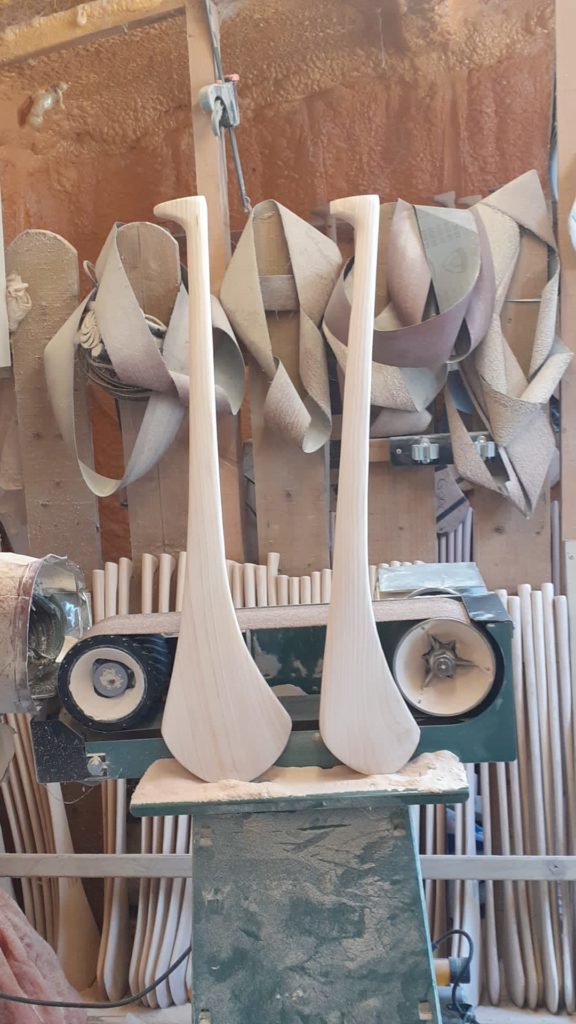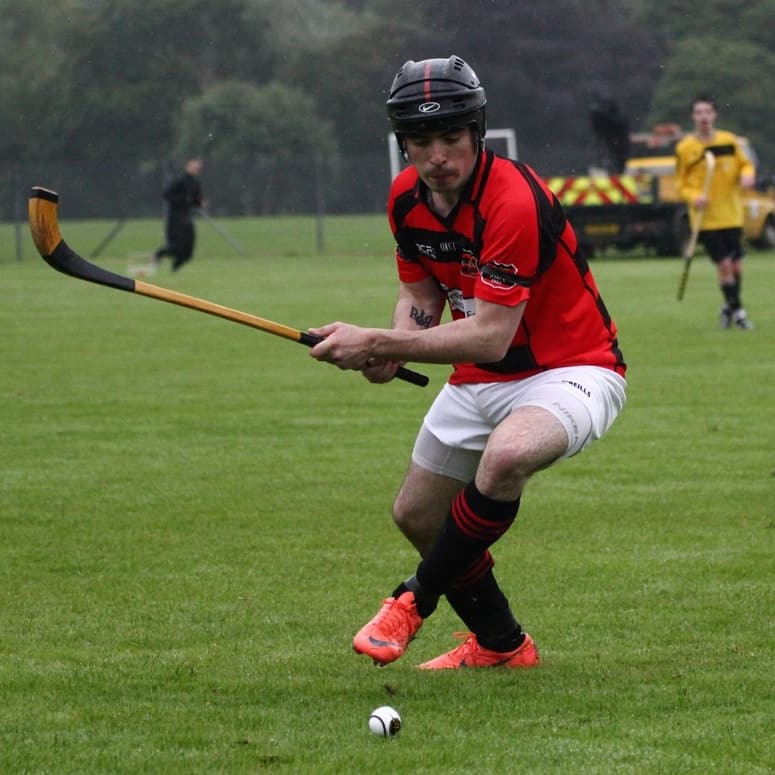Credit; John Condon Donal White
Chances are It’s not…..
Before you read the rest of this.
We want you to do something for us,
Grab a measuring tape, head out to the garage or your shed and measure any Hurley’s you have on the widest point of the Bas, take note of it and come back and read the rest of the article.
The only rules about the Hurley in the Rule book are:
“The bas of a Hurley at its widest point shall not be more than 13cm.
Here It is laid out in the Official GAA Rulebook, A 15 word sentence governing the size and shape of the Hurley.

Almost all Hurlers in the modern game use a Bas exceeding 13cm.
In the RTE article “It’s all about that Bas – the changing face of the hurl,” one prominent Hurley-maker reports they have not made a Hurley to legal specification since “the early 2000s if not the late 1990s”.
So let’s just repeat the rule again here – “The Bas of a Hurley at its widest point shall not be more than 13cm.”
This means if the Bas exceeds 13cm, then it is not a Hurley!
If we think the sport should be played to its own rules, then the Sliotar should not even be thrown in.
Most so-called experts are not aware of this rule on the Hurley Bas, and for the ones that are, they seem happy to turn a blind eye. “Shur just let it flow and stop on about rules will ya!” If Hurling is a real sport, then it needs to act like it.
What do other Sports do?
Look at Ice Hockey; it is lightning fast and ferociously physical. However it also has very detailed rules about the equipment and the Hockey stick in particular. If a player is suspected of using an illegal stick, the opposing captain can make a request for measurement which the referee must carry out there and then.
Just take a look at the rules governing the Ice Hockey stick in comparison to the brevity of the rules in relation to the Hurley
Rule 301 | Sticks
(a) The sticks shall be made of wood or other material approved by the Rules Committee, and must not have any projections. All edges of the blade shall be beveled. The end of a hollow shaft must be fully covered. Adhesive tape of any color may be wrapped around the stick at any place for the purpose of reinforcement or to improve control of the puck.
(b) No stick shall exceed 65 inches in length from the heel to the end of the shaft. The widened portion of the goalkeeper’s stick extending up the shaft from the blade shall not extend more than 26 inches from the heel and shall not exceed 3 ½ inches in width. The blade of the player’s stick shall not exceed 12 ½ inches in length and 3 inches in width.
The width of the blade shall be a minimum of 2 inches at any point measured along the blade.
The blade of the goalkeeper’s stick shall not exceed 15 ½ inches in width from the heel to the end. The blade of the goalkeeper’s stick shall be between 2 inches and 3 ½ inches wide except at the heel where the maximum width shall be 4 ½ inches.
The curvature of the blade, measured in such a way that a straight line drawn from the heel to the base of the toe shall not exceed ¾ inch at the point of maximum curvature.
(c) A minor penalty for an equipment violation shall be assessed to any player or goalkeeper who uses a stick not conforming to the provisions of this rule.
(Note) When a request for measurement is made by the Captain of a team against the dimensions of any stick, the Referee shall make the necessary measurement immediately.
If the complaint is not sustained, a bench minor penalty for delay of game shall be assessed to the team requesting the measurement.
If a goal is scored with an illegal stick, the proper penalty shall be assessed and the goal shall be allowed.
(d) A minor penalty for unsportsmanlike conduct plus a misconduct penalty shall be assessed to any player who refuses to surrender their stick for measurement when requested to do so by the Referee.
(e) A minor penalty for an equipment violation shall be assessed to a player or goalkeeper who participates in the play while they are in possession of more than one stick, except that no penalty shall be assessed to a player who is accidentally struck by the puck while they are carrying a replacement stick to a teammate.
As for Golf,
Well Hurling’s entire playing rules are shorter than just the equipment rules alone, governing that sport.


A Hypothetical Question
Seeing as how the sparse rules already in relation to the shape, design and even material that a Hurley can be made from, are completely ignored.
We are essentially in Wild West territory when it comes to this aspect of the game.
Could a goalie take the field with a Hurley Bas 2 meters wide and cover the entire goal?
Well he’s only breaking the same rule as everyone else, so why not?
What about this next one…
• My team have a sideline cut in the last minute of the All Ireland Final.
• I put aside my illegal Hurley and take out a Shinty stick to take the sideline.
• The Shinty stick is very similar to the old style of Hurley from 100 years ago. It has a Bas less than 13cm in width, and so is the only legal Hurley on the field.
• The Shinty stick is perfectly designed for powerfully striking the ball off the ground, and in this case the ball goes over the bar with much less difficulty than if I had used a Hurley.
• If the referee objects, then he is objecting to the only legal Hurley on the field, while allowing every illegal Hurley to be used by everyone else. If he objects, then he is insisting that I break the rules of the game, and he is not carrying out his own first duty of controlling the game in accordance with its rules. I can’t argue with him (that’s dissent) but the rules are on my side.
Any team today could use this tactic to turn sideline cuts into a much easier chance of a point. Let’s see will it happen!

Like to read why the Hook Tackle in Hurling needs to be addressed in the Rule book?